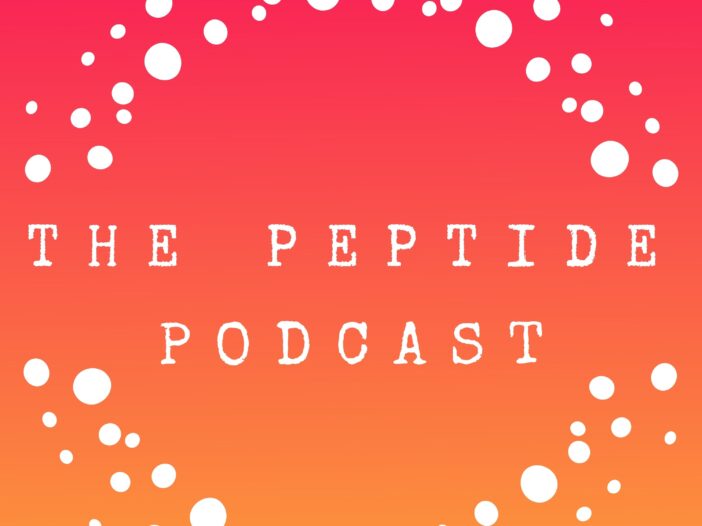
Glucagon-like peptide 1 (GLP-1) is a hormone primarily known for its role in regulating blood sugar levels through its effects on insulin secretion and appetite control. However, recent research has shown another significant function of GLP-1: its ability to reduce inflammation. This opens new avenues for therapeutic interventions in various inflammatory conditions and chronic diseases.
In this podcast, we’ll discuss GLP-1’s role in reducing inflammation and how it may help you.
What is GLP-1?
GLP-1 is an incretin hormone produced by intestinal L-cells in response to food intake. It enhances insulin secretion from the pancreas in a glucose-dependent manner.
Here’s how glucose-dependent insulin secretion works:
- Increase in Blood Glucose Levels: After you eat, carbohydrates in your food are broken down into glucose, which is absorbed into your bloodstream, raising your blood sugar levels.
- Release of GLP-1: In response to the rising blood glucose levels, your intestines release a hormone called GLP-1 (Glucagon-Like Peptide 1).
- Stimulation of the Pancreas: GLP-1 travels through your bloodstream to your pancreas, where it stimulates the beta cells in the pancreas to release insulin.
- Insulin Release: The insulin is then released into your bloodstream. Insulin acts like a key, allowing glucose to enter your cells so it can be used for energy.
- Glucose-Dependent Nature: The important part is that this whole process depends on the presence of glucose. If your blood glucose levels are not high, GLP-1 will not signal your pancreas to release insulin. This prevents your blood sugar from dropping too low, which could cause hypoglycemia (dangerously low blood sugar levels).
GLP-1 also slows gastric emptying and reduces appetite, which collectively help manage postprandial blood glucose levels. GLP-1 exerts its effects by binding to the GLP-1 receptor (GLP-1R), which is expressed in multiple tissues, including the pancreas, brain, heart, and immune cells.
The Link Between GLP-1 and Inflammation
Inflammation is a complex response to harmful stimuli such as pathogens, damaged cells, or irritants. Chronic inflammation contributes to many diseases, including cardiovascular diseases, diabetes, and neurodegenerative disorders.
How does GLP-1 reduce inflammation?
- Modulation of Immune Cells: GLP-1 influences various immune cells, including macrophages, T cells, and dendritic cells. It has been observed to shift macrophages from a pro-inflammatory (M1) to an anti-inflammatory (M2) phenotype, reducing the secretion of pro-inflammatory cytokines like TNF-α, IL-6, and IL-1β. This shift plays a crucial role in dampening the inflammatory response.
- Inhibition of Nuclear Factor-kappa B (NF-κB) Pathway: NF-κB is a transcription factor that regulates the expression of genes involved in inflammation. Activation of GLP-1R has been shown to inhibit the NF-κB pathway, thereby reducing the transcription of pro-inflammatory genes. This inhibition helps in lowering the levels of inflammatory mediators in the body.
- Reduction of Oxidative Stress: GLP-1 reduces oxidative stress by increasing the expression of antioxidant enzymes. Oxidative stress is a significant driver of inflammation, and by mitigating it, GLP-1 helps in lowering the inflammatory burden. This is particularly beneficial in conditions like atherosclerosis and diabetes, where oxidative stress is a major pathogenic factor.
- Cardiovascular Protection: Chronic inflammation is a well-known risk factor for cardiovascular diseases. GLP-1 and its analogs have been shown to improve endothelial function, reduce vascular inflammation, and protect against atherosclerosis. These effects are mediated through the reduction of inflammatory cytokines and oxidative stress, as well as the improvement of lipid profiles.
- Neuroprotection: Neuroinflammation is a critical component of neurodegenerative diseases such as Alzheimer’s and Parkinson’s disease. GLP-1 analogs have demonstrated neuroprotective effects by reducing neuroinflammation, improving neuronal survival, and enhancing cognitive function. These benefits are attributed to the reduction in pro-inflammatory cytokines and the enhancement of neurotrophic factors.
Therapeutic Implications
The anti-inflammatory properties of GLP-1 have significant therapeutic implications. GLP-1 receptor agonists, initially developed for the treatment of type 2 diabetes, are now being explored for their potential in treating various inflammatory and chronic diseases.
- Type 2 Diabetes and Metabolic Syndrome: The dual action of GLP-1 in regulating blood glucose and reducing inflammation makes it a promising therapeutic agent for managing type 2 diabetes and its complications.
- Cardiovascular Diseases: Given the role of inflammation in atherosclerosis and other cardiovascular conditions, GLP-1 analogs could offer cardiovascular protection and improve outcomes in patients with heart disease.
- Neurodegenerative Disorders: The neuroprotective and anti-inflammatory effects of GLP-1 analogs present a potential therapeutic strategy for slowing the progression of neurodegenerative diseases and improving cognitive function.
- Inflammatory Bowel Disease (IBD): Preliminary studies suggest that GLP-1 analogs may help in reducing inflammation in IBD, offering a novel treatment approach for this chronic inflammatory condition.
Thanks again for listening to The Peptide Podcast. We love having you as part of our community. If you love this podcast, please share it with your friends and family on social media, and have a happy, healthy week!
We’re huge advocates of elevating your health game with nutrition, supplements, and vitamins. Whether it’s a daily boost or targeted support, we trust and use Momentous products to supercharge our wellness journey.
Momentous only uses the highest-quality ingredients, and every single product is rigorously tested by independent third parties to ensure their products deliver on their promise to bring you the best supplements on the market.
Leave a Reply